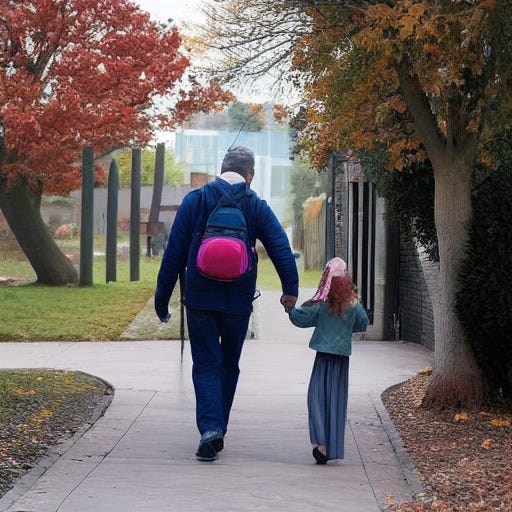How to aptly evade the nature of gun violence.
Don't let facts interfere with your agenda.
A Canadian friend recently asked if I was ever worried about the epidemic of mass shootings in schools. It is heavily reported on but isn’t something Canadians have to think about. On the other hand, my daughter is 10 months old but one day, teary eyed, I will have to walk her to grade one.
Every death is a tragedy but school mass shootings isn’t something I spend time thinking about. I’m certain there are far more dangerous activities my daughter will engage in every day. But truth be told, without data, this line of argument isn’t particularly convincing. So I looked it up.
K-12 School Shooting Database is a website that keeps track of school shootings. It is run by The Violence Project, a non-profit research center dedicated to reducing mass shooting and violence in society. They don’t strike me as gun totting fanatics but you can judge for yourselves. However, if I had any doubts after the conversation with my friend, this organization has unintentionally put me at ease.
They do not define the term “mass shooting” because there is no widely accepted definition. The most common characterization I have seen is incidents with 4 or more victims, either injured or killed, not including the perpetrator.
According to their own data, in the last 50 years, when the country grew by 50%, and we’ve had anywhere from 40 to 60 million children among us, we’ve had a total of 47 school mass shooting events. After crunching some numbers, it works out to an average of 12 victims per year. I cannot remember my high school statistics too well so please accept my apologies. However, the chances of your kid being involved in a school mass shooting is well below 1 in a million.
As a comparison, the 6th most common cause of death for kids is what CDC refers to as “intentional self harm”. It is sadly 50 times more likely.
If you suspect these numbers, you should - because I played a trick. As far as accuracy goes, it is accurate aside from unintentional math blunders. These numbers are this low because I limited the analysis to a very specific set of crimes - School. Mass. Shooting. All three words are carefully chosen.
If I wanted to tell you a completely different story I could as well. Take a look at this study from the New England Journal of Medicine - a very prestigious publication. It also happens to be the first result when Googling “kids causes of death”. It shows that firearms are the number one cause of death for children. That’s alarming.
However, once you dig in, you find important details.
About a third of deaths are categorized as suicides rather than homicides. Though troubling on its own, this isn’t what we mean by “gun violence”; or what we target with “gun control”.
The age range is chosen carefully. They include kids and adolescents all the way up to 19. A prime age for adult males to join gangs and commit crimes.
The data includes 2020 - a time of government imposed national lockdowns - a policy that will likely keep on paying dividends in the form of disrupted supply chains, inflation, decline in mental health, lost school years and further deterioration in trust of our institutions.
Subtracting the suicides and looking at pre-pandemic numbers cuts the rate in half. Restricting it to 14 instead of 19 cuts the rate further by a factor of 7 - making swimming in a pool more dangerous. Which one is the right number? It depends.
I’m sure you could slice and dice the numbers further - adjust it by race, income, or location. Maybe you could show that states governed a certain way are better or worse for gun violence - depending on your agenda. At the same time, when reading other people’s work on the subject, be careful you aren’t just confirming your biases - because the first principal is you must not fool yourself and you’re the easiest person to fool.

